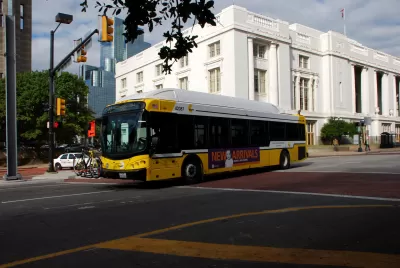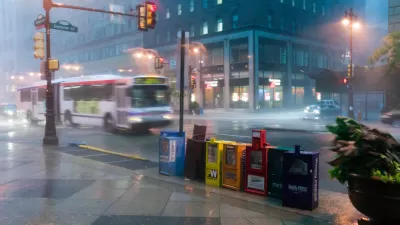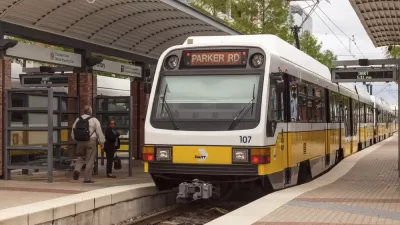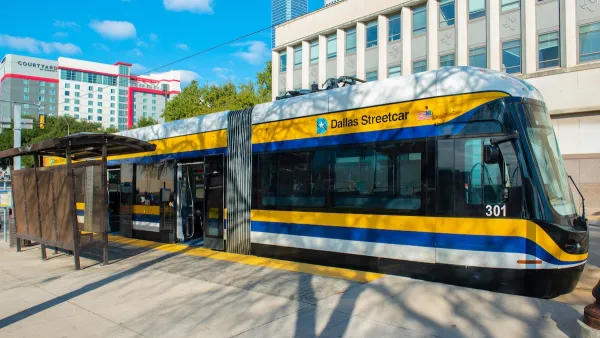The Dallas City Council recently approved a long-awaited and much-delayed bus system redesign for DART. Riders should require fewer transfers and shorter wait times starting in January 2022.

"The long-promised and even longer-overdue overhaul of [the the Dallas Area Rapid Transit] bus system — neglected for decades while the transit agency focused on flashy rail projects — will finally roll out in January," according to a column by Sharon Grigsby.
According to Grigsby's assessment, the DARTzoom bus system redesign approved by the Dallas City Council at the end of August won't fix everything, but it's a decent start toward making the system faster and easier to navigate.
DART is selling DARTzoom as a benefit to riders—who should require fewer transfers and shorter wait times to get around the city on buses. Grigsby calls attention to three key changes designed to achieve those goals:
- On-demand GoLink service "will be increased substantially — to a total of 30 zones — and become an even more essential part of the system."
- All local routes "will run seven days a week from, at minimum, 5 a.m. to midnight, with some in service even longer."
- "In some cases, bus routes are farther apart from one another, especially those that were bunched together."
Rob Smith, interim vice president for service planning, is quoted in the article describing the new bus system as a hybrid of a high-frequency grid and a hub-and-spoke layout.
"The new plan calls for DART to designate 22 bus routes and its four light rail lines as a 'core frequent network' in which the goal will be a maximum 15-minute wait at rush hour, 20 minutes midday and occasionally 30 minutes in late evening," explains Grigsby.
Grigsby provides more on the current state of the system and the political changes that spurred the system redesign across the finish line—after elected and political leaders pushed DART to balance the core city's best interests with a commitment to regional planning.
For more, see the existing system map, and the new DARTzoom map.
FULL STORY: In booming region, will DART overhaul give Dallas a bus system that connects people with jobs?

Planetizen Federal Action Tracker
A weekly monitor of how Trump’s orders and actions are impacting planners and planning in America.

The Simple Legislative Tool Transforming Vacant Downtowns
In California, Michigan and Georgia, an easy win is bringing dollars — and delight — back to city centers.

San Francisco's School District Spent $105M To Build Affordable Housing for Teachers — And That's Just the Beginning
SFUSD joins a growing list of school districts using their land holdings to address housing affordability challenges faced by their own employees.

In More Metros Than You’d Think, Suburbs are Now More Expensive Than the City
If you're moving to the burbs to save on square footage, data shows you should think again.

The States Losing Rural Delivery Rooms at an Alarming Pace
In some states, as few as 9% of rural hospitals still deliver babies. As a result, rising pre-term births, no adequate pre-term care and "harrowing" close calls are a growing reality.

The Small South Asian Republic Going all in on EVs
Thanks to one simple policy change less than five years ago, 65% of new cars in this Himalayan country are now electric.
Urban Design for Planners 1: Software Tools
This six-course series explores essential urban design concepts using open source software and equips planners with the tools they need to participate fully in the urban design process.
Planning for Universal Design
Learn the tools for implementing Universal Design in planning regulations.
Smith Gee Studio
City of Charlotte
City of Camden Redevelopment Agency
City of Astoria
Transportation Research & Education Center (TREC) at Portland State University
US High Speed Rail Association
City of Camden Redevelopment Agency
Municipality of Princeton (NJ)





























